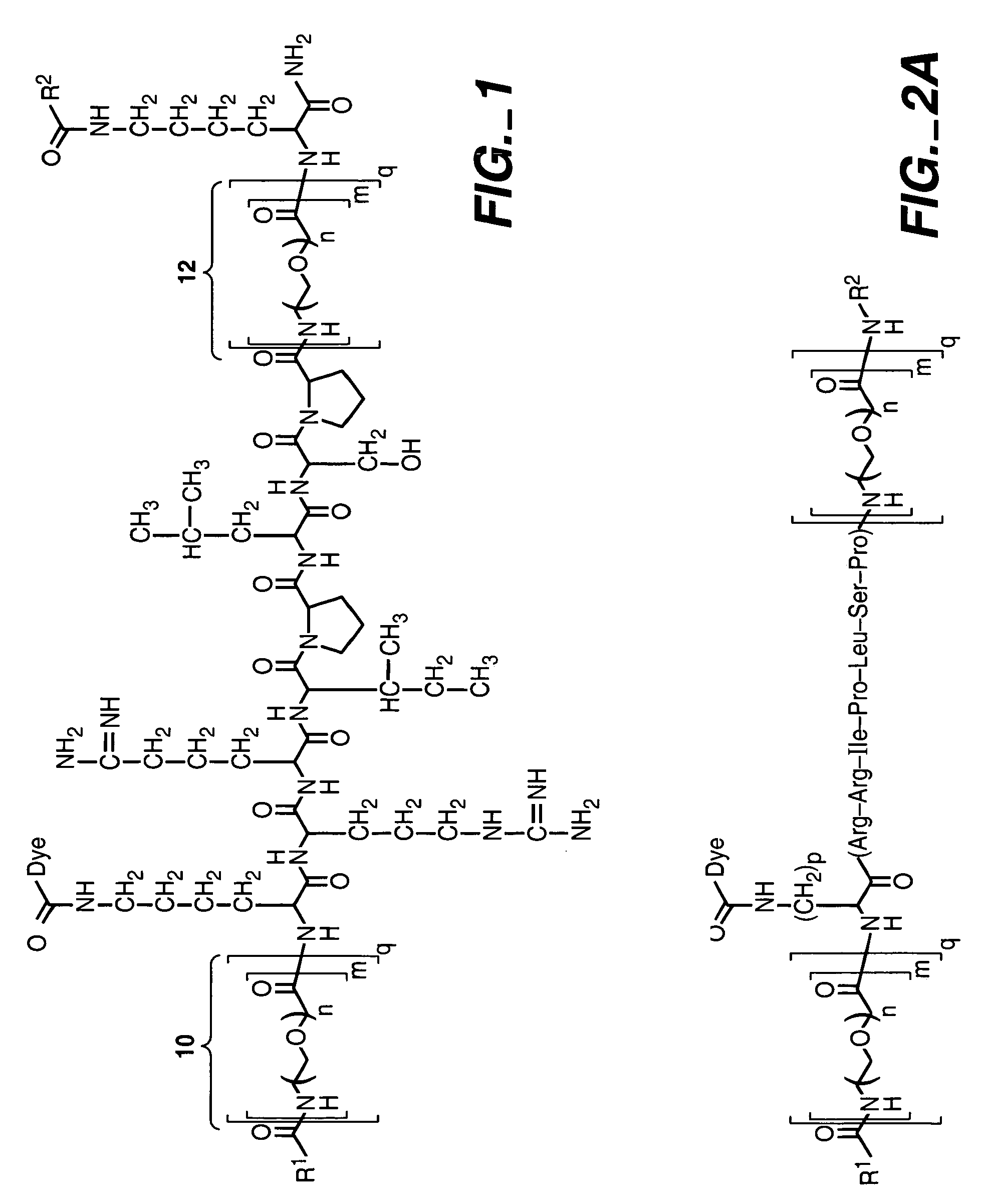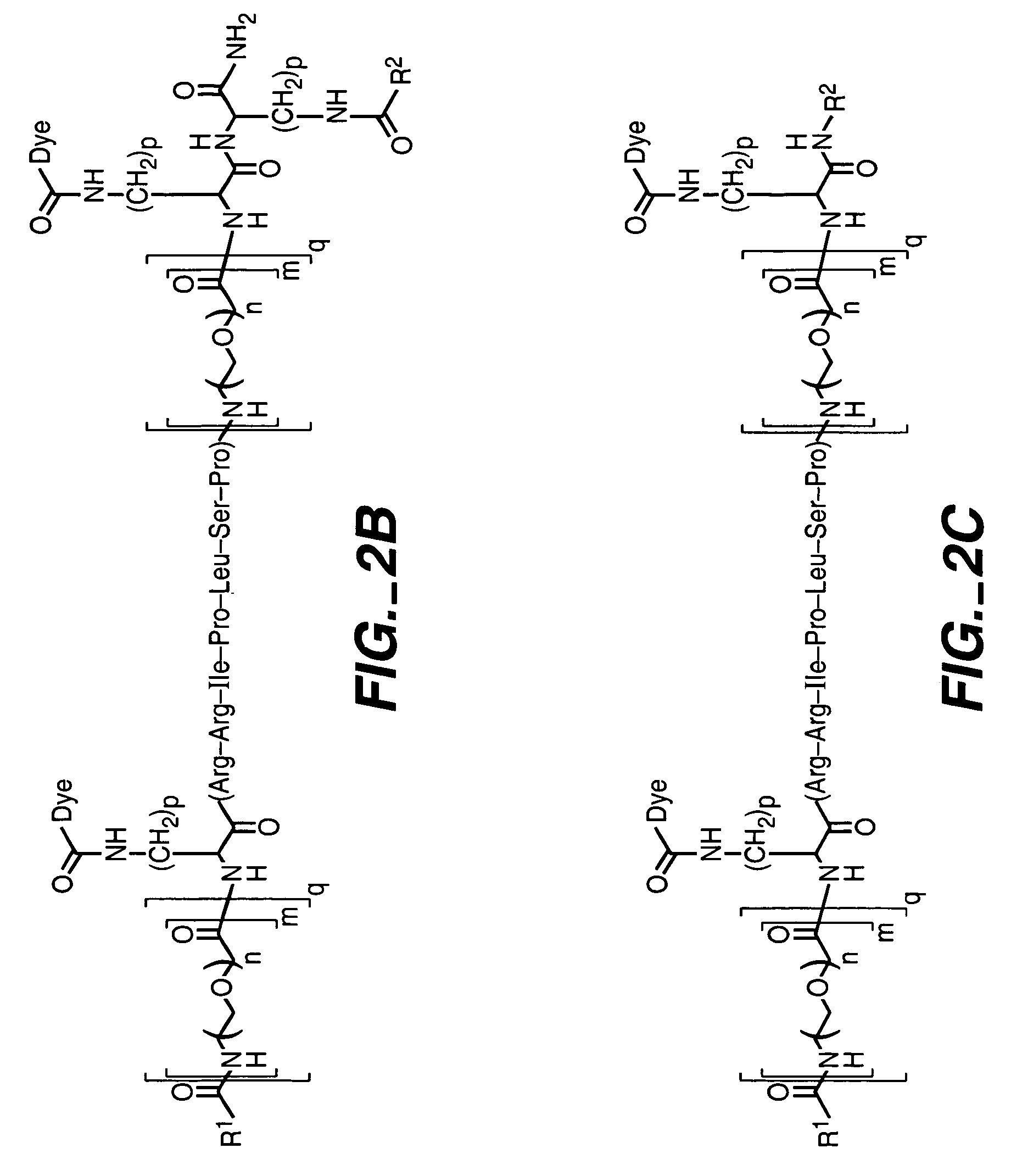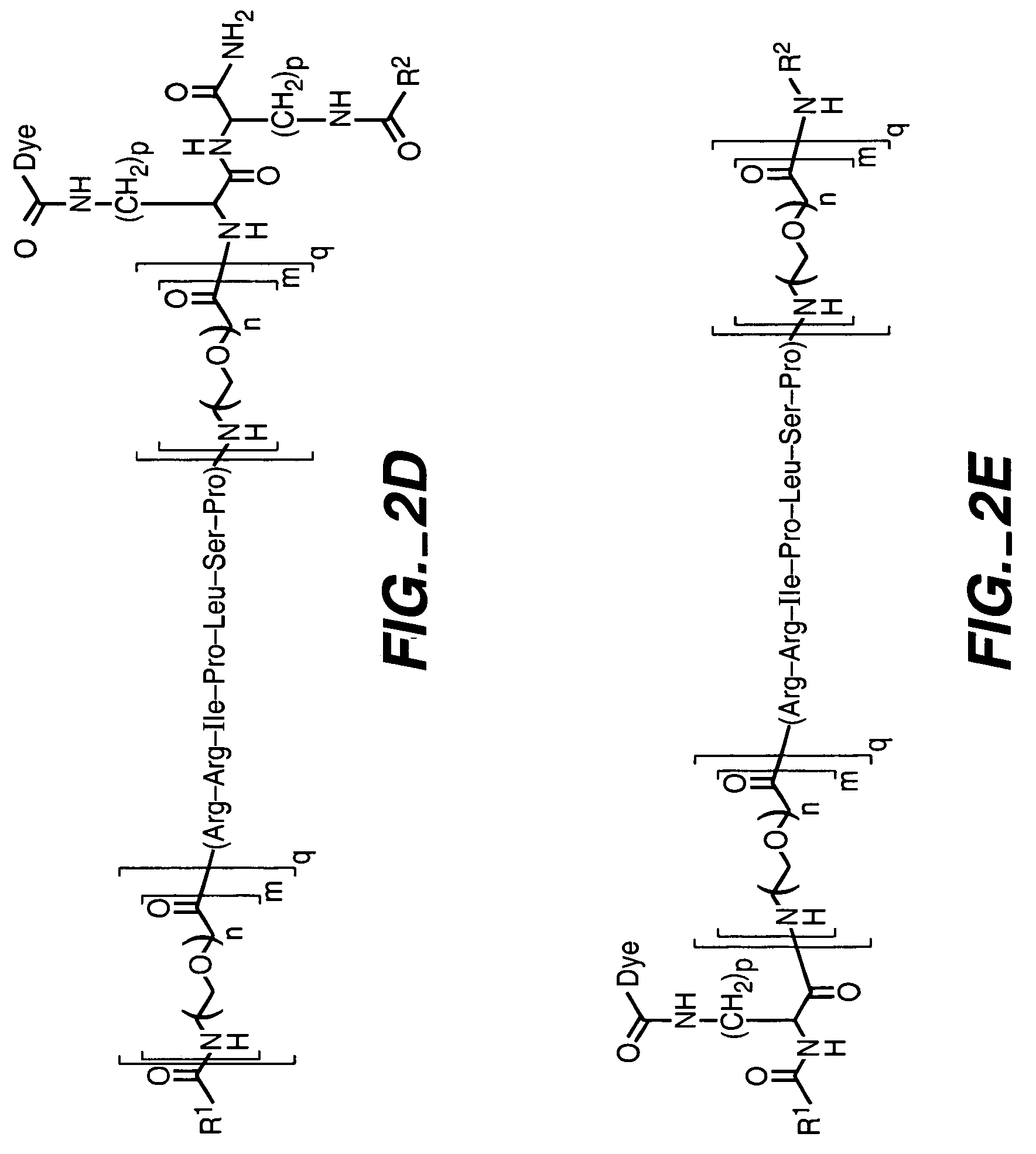Fluorogenic kinase assays and substrates
a technology of fluorogenic kinase and substrate, which is applied in the direction of instruments, peptides/protein ingredients, peptides, etc., can solve the problems of inconvenient, expensive, and other deficiencies of the current assay protocol
- Summary
- Abstract
- Description
- Claims
- Application Information
AI Technical Summary
Benefits of technology
Problems solved by technology
Method used
Image
Examples
example 1
Preparation of Protein Kinase Substrates
[0185]Resins and reagents for peptide synthesis, Fmoc amino acids, 5-carboxyfluorescein succinimidyl ester were obtained from Applied Biosystems (Foster City, Calif.). Fmoc-Lys(Mtt)—OH, Fmoc-Ser(OPO(OBzl(OH)—OH and Fmoc-Dpr(ivDde) were obtained from Novabiochem. All other chemicals and buffers were obtained from Sigma / Aldrich.
[0186]Peptide synthesis was performed on an Applied Biosystems Model 433A Peptide Synthesizer. HPLC was performed on an Agilent 1100 series HPLC. UV-Vis measurements were performed on a Cary 3E UV-Vis spectrophotometer. MALDI Mass spectral data were obtained on an Applied Biosystems Voyager using cyano-4-hydroxycinnamic acid as matrix material.
[0187]An exemplary enzyme substrate useful for detecting protein kinase p38βII, C12-OOK(dye2)RRIPLSPOOK(C12)-amide (peptide disclosed as SEQ ID NO: 20) (compound 1), was prepared as follows. The peptide OOK(ivDde)RRIPLSPOOK(Mtt) (peptide disclosed as SEQ ID NO: 20) was constructed v...
example 2
Detection of Protein Kinase Activity
[0188]Kinase assays were performed using Corning 384-well, black, non-binding surface (NBS), microwell plates. Fluorescence was read in real time using a Molecular Dynamics Gemini XS plate reader, with excitation and emission set at 500 and 550 respectively. The plate was read every minute for one hour at ambient temperature
[0189]Concentrations of dye-labeled peptides were determined by dilution of the purified peptides into dimethylformamide (200 μL) with 1 M NaOH (5 μL) and measuring the absorbance of either 5-carboxy-2′,7′-dipyridyl-sulfonefluorescein (i.e. dye2) at its absorbance maximum (548 nm) or 2′,7′,4,7-tetachloro-5-carboxy fluorescein (i.e. 2′,7′-dichloro-5-carboxy-4,7-dichlorofluorescein or “tet”) at its absorbance maximum (541 nm). The extinction coefficient of both dyes was assumed to be 80,000 cm−1M−1.
[0190]A reaction solution was prepared containing compound 1 (2 mM) 20 mM Tris buffer, pH 7.4, MgC12 (5 mM), DTT (5 mM) and p38bII (1...
PUM
| Property | Measurement | Unit |
|---|---|---|
| molecular weight | aaaaa | aaaaa |
| pH | aaaaa | aaaaa |
| pH | aaaaa | aaaaa |
Abstract
Description
Claims
Application Information
 Login to View More
Login to View More - R&D
- Intellectual Property
- Life Sciences
- Materials
- Tech Scout
- Unparalleled Data Quality
- Higher Quality Content
- 60% Fewer Hallucinations
Browse by: Latest US Patents, China's latest patents, Technical Efficacy Thesaurus, Application Domain, Technology Topic, Popular Technical Reports.
© 2025 PatSnap. All rights reserved.Legal|Privacy policy|Modern Slavery Act Transparency Statement|Sitemap|About US| Contact US: help@patsnap.com



